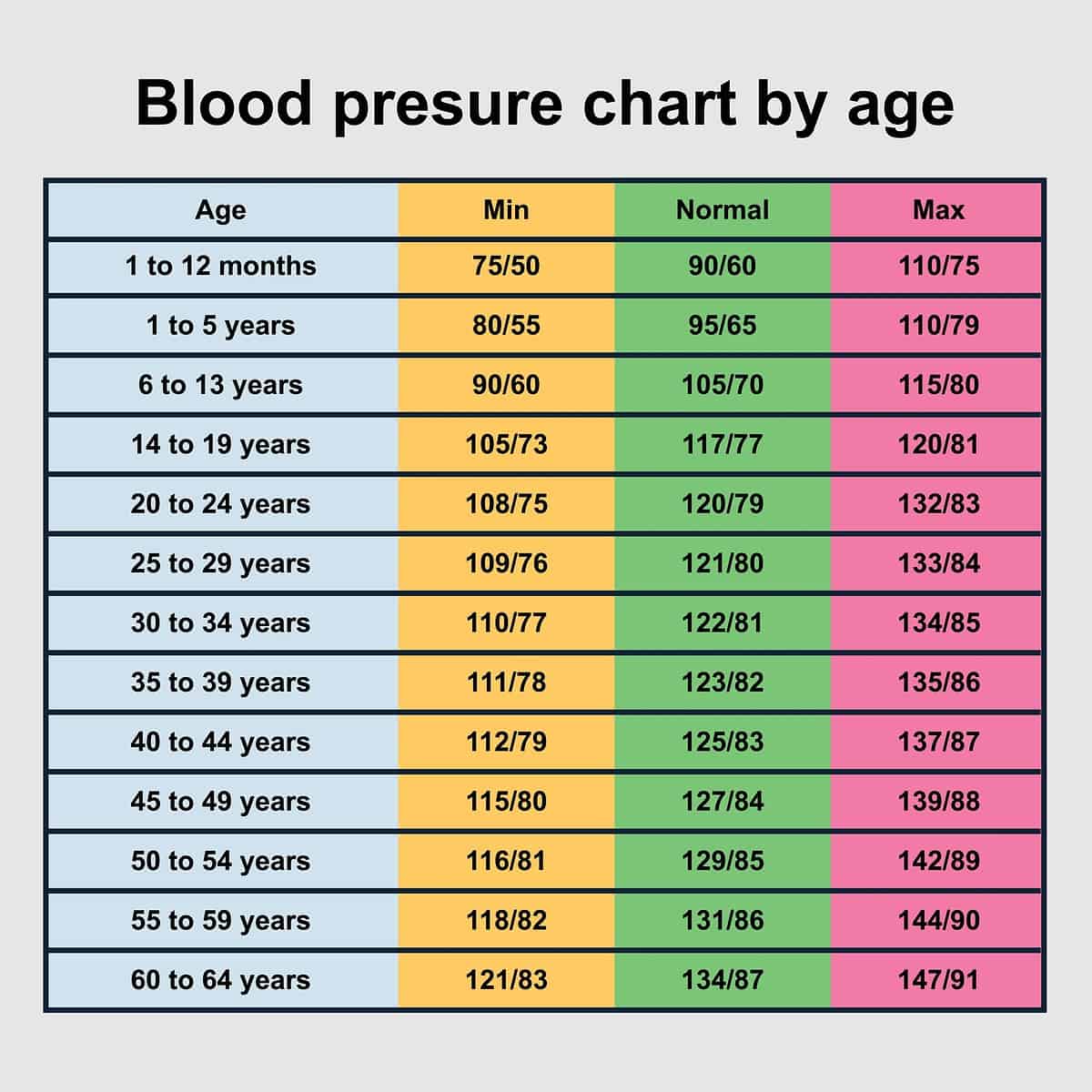

A Comprehensive Blood Pressure Chart for All Ages
Every time you visit your doctor, one of the first things they do is take your blood pressure. Blood pressure is a crucial part of cardiovascular health and is one of the best ways for doctors to monitor for various issues or conditions, like hypertension or hypotension. It is important that you maintain good blood pressure to prevent heart disease, stroke, and more.
Many factors can contribute to your blood pressure levels, whether they are too high or too low. One of the most significant factors is age. A blood pressure chart can help you determine what your normal range should be. Whether you want to stay on top of your health or have a family history of high blood pressure, check out the chart below to see where your blood pressure falls.

©RAHMAT DWI CAHYO/Shutterstock.com
Using the Blood Pressure Chart by Age
A blood pressure chart is a simple way to determine whether your blood pressure is normal for your age. Your blood pressure isn't the same all the time. Several normal variations occur throughout the day. Your blood pressure is typically lower while you’re sleeping, but rises slightly before you wake up in the morning.
Outside of your regular blood pressure pattern, it may rise because you’re angry or stressed. Despite these fluctuations throughout the day, you should have a consistent blood pressure range that you fall into during normal activities.
The blood pressure chart shows the minimum, maximum, and normal levels for people from birth to 64 years old. You can see what your normal range is by finding your age on the chart. While your blood pressure can sometimes vary slightly minute by minute, your level consistently falling outside of the normal range may indicate a health issue.
What Is Normal Blood Pressure by Age?
When it comes to blood pressure readings, what’s normal for one person isn’t necessarily what’s normal for everyone. The normal range for a newborn baby is much different than the range for someone in their mid-40s.
As you age, the range of blood pressure readings increases due to some of the changes in your blood vessels. That’s why when you’re determining what range is normal for you, it’s essential to keep your age in mind.
What Is Blood Pressure?
You may have taken your blood pressure before or had a medical professional take your blood pressure, but have you wondered what blood pressure actually is? Blood pressure, just like it sounds, is the pressure or force of blood inside your arteries.
When your heart beats, blood is pumped into your arteries so it can be transported throughout your body. The force of this blood as it's pumped to your arteries is your blood pressure. Blood pressure shouldn’t be confused with heart rate, which is actually how many times your heart beats in a minute, not the pressure of your blood.
What Do Blood Pressure Numbers Mean?
Blood pressure matters because it has a significant impact on your overall health. Your blood pressure changes based on many factors including your age, physical activity, and medications. The range of what is normal varies drastically based on your age, so healthy ranges aren’t the same for everyone.
High blood pressure can significantly impact the overall health of a person. When someone has high blood pressure, also known as hypertension, it can cause serious long-term health problems, such as a stroke, heart attack, or kidney failure.
Some people don’t have chronic high blood pressure but experience high blood pressure during pregnancy. This is known as preeclampsia, and it can be incredibly dangerous if it’s not treated. This is why your blood pressure is taken so frequently throughout pregnancy and it’s one of the reasons your urine is tested as well.

©ABO PHOTOGRAPHY/Shutterstock.com
How to Take Your Blood Pressure at Home
If you’re at risk for low or high blood pressure, it’s easy to take your blood pressure at home with a blood pressure monitor. This is a great way for people with high blood pressure or those who are at risk of high blood pressure to keep track of their readings throughout the day.
To measure your blood pressure at home, follow these tips:
- Purchase a blood pressure monitor that goes around your upper arm. These are the most accurate kinds.
- Find a monitor that inflates automatically. While manual monitors are accurate when used properly, they’re not the best kind for use at home.
- Avoid consuming caffeine or alcohol 30 minutes before taking your blood pressure. Even though caffeine doesn’t necessarily have long-term effects on your blood pressure, it can cause a short-term spike leading to inaccurate results.
- Sit straight in a chair and keep your legs uncrossed during the reading. Crossing your legs increases your blood pressure, which can lead to inaccurate results.
- Take the reading twice and if the results are similar, you can use the average of the two. If the readings were significantly different, take your blood pressure a third time and then record the average of the three readings.
Recording your blood pressure at home can be a helpful way to keep track and record the information for your doctor, especially if you’re at risk for high blood pressure. However, even if your blood pressure seems fine, it’s still important to have regular check-ups and always consult your doctor if you have any concerns about your blood pressure.
What if I only Have High Blood Pressure at the Doctor's?
Monitoring your blood pressure at home is also helpful for getting the most accurate reading. Some people seem to have high blood pressure, but they only experience this rise in blood pressure at the doctor’s office.
It’s no surprise that a doctor’s visit is enough to make your blood pressure rise. Whether visiting the doctor makes you nervous or you’re concerned about your blood pressure results, you can have a rise in blood pressure only when you visit the doctor. This is often known as white coat syndrome or white coat hypertension.
Although there are some risk factors that make someone more likely to experience white coat syndrome, finding a doctor you trust and allowing extra time to calm down before your appointment can help.
Understanding Blood Pressure Readings
When you take your blood pressure or look at the blood pressure chart, you’ll notice there are two numbers included. Both numbers are an important part of your blood pressure reading.
The top number in your reading is called systolic blood pressure. This number represents the pressure of the blood being pumped into your arteries when your heart beats. The second number is your diastolic blood pressure, which is the pressure in your arteries between beats when your heart is resting.
Even though both numbers do matter, medical professionals put a lot more emphasis on the top number, or systolic blood pressure, because it’s a risk factor for cardiovascular disease.
What Is Hypertension?
According to the American Heart Association, a normal blood pressure reading is under 120/80. Although the range of normal varies by age, a reading over this number is considered elevated blood pressure.
There are several different stages of blood pressure, from elevated to the two stages of high blood pressure. A reading higher than 180/120 is a hypertensive crisis and a medical emergency.
If you or someone in your family experiences blood pressure over 180/120, go to the emergency room right away. Blood pressure that high can lead to a heart attack, stroke, or other health complications.
Healthy Choices Lead to Lower Blood Pressure
You’ll notice that your blood pressure changes in different circumstances. It’s helpful to take readings throughout the day if you’re measuring the changes in your blood pressure. Many risk factors can lead to high blood pressure, and many of them are related to your lifestyle. Some of the causes include lack of physical activity and obesity.
Certain conditions, such as diabetes, can also increase your chances of having high blood pressure. You can't always avoid high blood pressure, but eating healthy, managing your stress, and getting regular exercise can lead to healthy blood pressure levels.